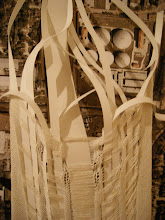Remote
Redundancy
Parallel
Differential
Switch
Governor
Partition
Function
Summation
Subtraction
Redundancy
Parallel
Differential
Switch
Governor
Partition
Function
Summation
Subtraction
Benton MacKaye [later worked under FDR to help design the highway system]
Mackaye treated a site as a set of interdependent parts within which small shifts in balance or orientation had an enormous effect. Through a series of texts and articles he discussed frequently the act of “visualizing” as influenced by American transcendentalists Emerson and Thoreau. Visualizing depends on a reliance on the use of memory and eidetic perceptions and charting of the potential now existing in the actual.
“And so with planning generally: the final thing planned is not mere area or land, but movement or activity.”
 MacKaye’s Appalachian Trail, a 2000 mile footpath up the Eastern Seaboard that he described as a transportation project. He proposed no master plan but rather an ordering principle for a new economy. This footpath was the dominant infrastructure that would organize streets and rails. In doing this he inverted the conventional hierarchy of transportation and development. He located the trail along side the mountain ridge, with the ridge becoming the central spine of development. This replaced the tall buildings of the metropolis and reversing its dominant pattern of concentric growth.
MacKaye’s Appalachian Trail, a 2000 mile footpath up the Eastern Seaboard that he described as a transportation project. He proposed no master plan but rather an ordering principle for a new economy. This footpath was the dominant infrastructure that would organize streets and rails. In doing this he inverted the conventional hierarchy of transportation and development. He located the trail along side the mountain ridge, with the ridge becoming the central spine of development. This replaced the tall buildings of the metropolis and reversing its dominant pattern of concentric growth.To show sequence as a map is impossible—perceptions involve more than simply visual contact with the scenery. Passage in his trail enveloped the individual in a motion picture experience with a script that was consciously compiled, stored, and reconstituted.
In 1927 MacKaye toyed with the idea of creating a new map, charting activity rather than territory. This type of map allowed him to highlight the protocols of activity and exchange within an environment. Which were often pliable and filled with new sites and opportunities.
 MacKaye reorganized land through mapping and revealing new territory within it. This developed what MacKaye calls “Terra Incognita” or “Environment”—territory essentially discovered within a new arrangement of perceptions.
MacKaye reorganized land through mapping and revealing new territory within it. This developed what MacKaye calls “Terra Incognita” or “Environment”—territory essentially discovered within a new arrangement of perceptions.

No comments:
Post a Comment